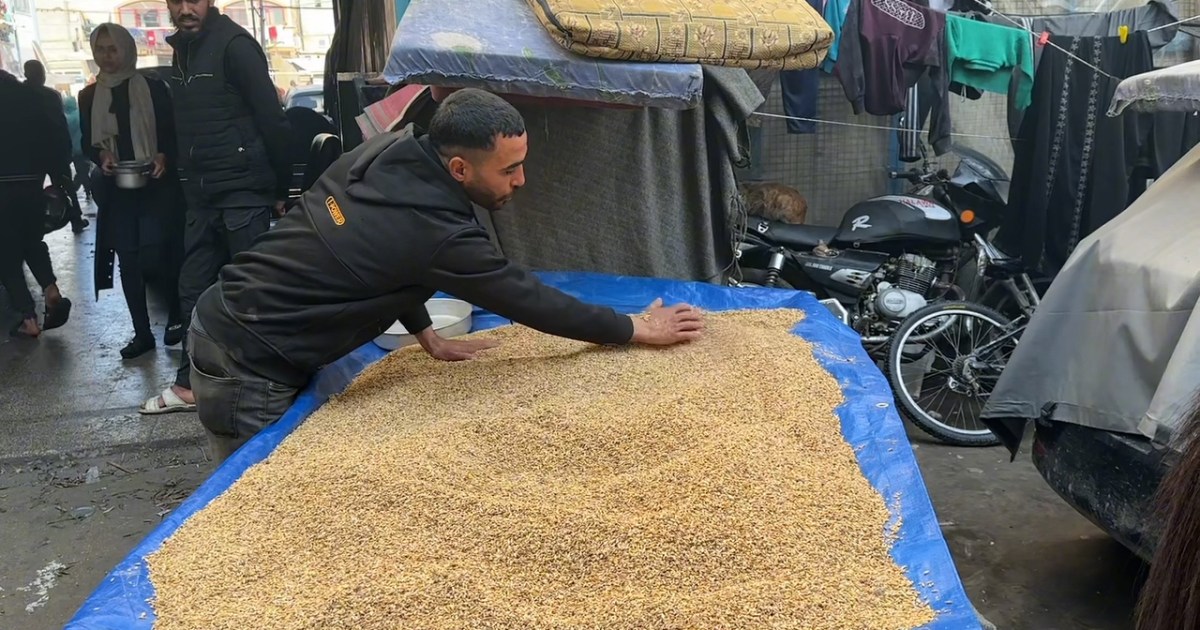play videoplay video
Video duration 03 minutes 51 seconds 03:51
Some families in the northern Gaza Strip are struggling to purify the remaining animal feed to satisfy their children's hunger, as food supplies run out.
Hussein Al-Masry and his brother set off in the Gaza Strip on a desperate journey to save the remaining barley grains stored in horse feed silos, before they become moldy, after they were severely damaged by rainfall, in an attempt to make them fit for human consumption.
Hussein explains the painstaking work by saying, "We try to extract edible barley and wheat grains from the fodder for horses and cows, then expose them to sunlight to rid them of insects, and after that we grind them into flour, in an attempt to make them edible."
The footage taken by Hussein - a photographer collaborating with Al Jazeera - shows him packing the rescued horse fodder and then stretching it out on a cart, exposing it to the sunlight, which barely appears at this time of the year.
Al-Masry added, "We expose this wheat to the sun for two days, to try to satisfy our children's hunger with it. We have no other choice but this rotten flour, as there is no fine flour or rice in the market."
Other footage reveals the suffering of Mrs. Umm Al-Abd Al-Masry as she kneads what she made from horses’ wheat. She says, “I am forced to knead this flour that smells bad because it was intended to feed animals. I have to silence my hungry children.”
Umm al-Abd's challenge becomes more difficult when she tries to shape the dough into a loaf, because it crumbles in her hands, but she insists on baking as much dough as she can from the dough using a primitive wood fire.
Umm al-Abd adds, “I am trying to add some corn, bird feed, and some starch, in the hope that the dough will be suitable for shaping,” noting that “this bread cannot be eaten unless it is hot, because if it is cold, it becomes hard like wood and inedible.”
Famine escalates
The government media office in the Gaza Strip warned - the day before yesterday, Friday - of the escalation of famine in the northern Gaza Governorate after the quantities of flour, rice, food and food ran out, as well as the running out of grains and animal feed that citizens in the northern Gaza Strip were eating.
The media office confirmed that the northern regions of the Gaza Strip are in immediate need of bringing in a thousand trucks daily until they recover from the famine and its effects, and Israeli occupation army tanks stationed near the Gaza Valley are preventing food and medical aid from reaching the northern Gaza Strip.
In the same context, the World Food Program said that the residents of the Gaza Strip are living in a “major humanitarian catastrophe,” amid hunger, famine, and the spread of diseases.
The director of the World Food Program in Palestine revealed that there were UN statistics conducted last December indicating that at least 300,000 people in the northern Gaza Strip are at risk of dying from starvation.
Source: Al Jazeera

